«Making More from Less»
Explorations on the path towards modern architecture | Part Three
by Lennart Franz
Maria Ludwig Michael Mies Van der Rohe is inseparably connected to the Bauhaus. Being his last director he shifted the schools focus towards architecture and fed the Bauhaus through its final years. Due to his leadership role in the institution and his emigration to the US, he was maneuvering between the two major poles of architectural modernism. In his work, the ideals of new architecture and the sheer scale of Northern American urbanity converged – profiting by Americas industrial potency. Whereas the Bauhaus casted modernitys grounding, engaged in discourse and discussed design and architecture on a model scale, Mies Van der Rohe was already considering urban dimensions. He nevertheless shared the institutions canon of values, formulated during 1919 and 1933 and practiced by his colleagues Gropius and Neutra. Floating spaces, programmatic spatial openness, glass and steel were to become the ingredients of his architectural thoughts and works. His modernist icons should represent a spatial liberty, which was unthinkable in premodern times.
Architect by Nature
Creative work ran in Mies Van der Rohes blood: The father of young Ludwig, who was born in Aachen in 1886, owned a stonemason business, in which the youngest of four siblings helping out. He designed tombstones and decorative elements, quickly showing great talent in design. Stone by stone, he acquired his sense for architecture. Equipped with the experiences gathered in his parents business, he set out to start an apprenticeship as a mason, refining his design and craft capabilities for the next three years. Soon recognised, he started working as a designer for stucco elements designated to decorate various historicistic façades. Only a little while later he sets foot in the architectural world for the first time. In 1904 his design talents granted him an employment at the studio of Aachen based architect Albert Schneider. Having a lot of faith put into him, he is mandated the design of the entire façade decoration of the emporium “Warenhaus Tietz”, a local icon of historicism. In course of the construction work, Mies Van der Rohe met Rudolf Dullo. The Frankfurt architect and member of the German Werkbund was the site manager for Schneiders project. Recognising Mies’ potential, he enjoined him to move to berlin. Only there, in the nations untamed cultural and architectural melting pot, he would find the right conditions and likeminded spirits, to evolve his talents. The following year, Ludwig Mies Van der Rohe left his home eastward.
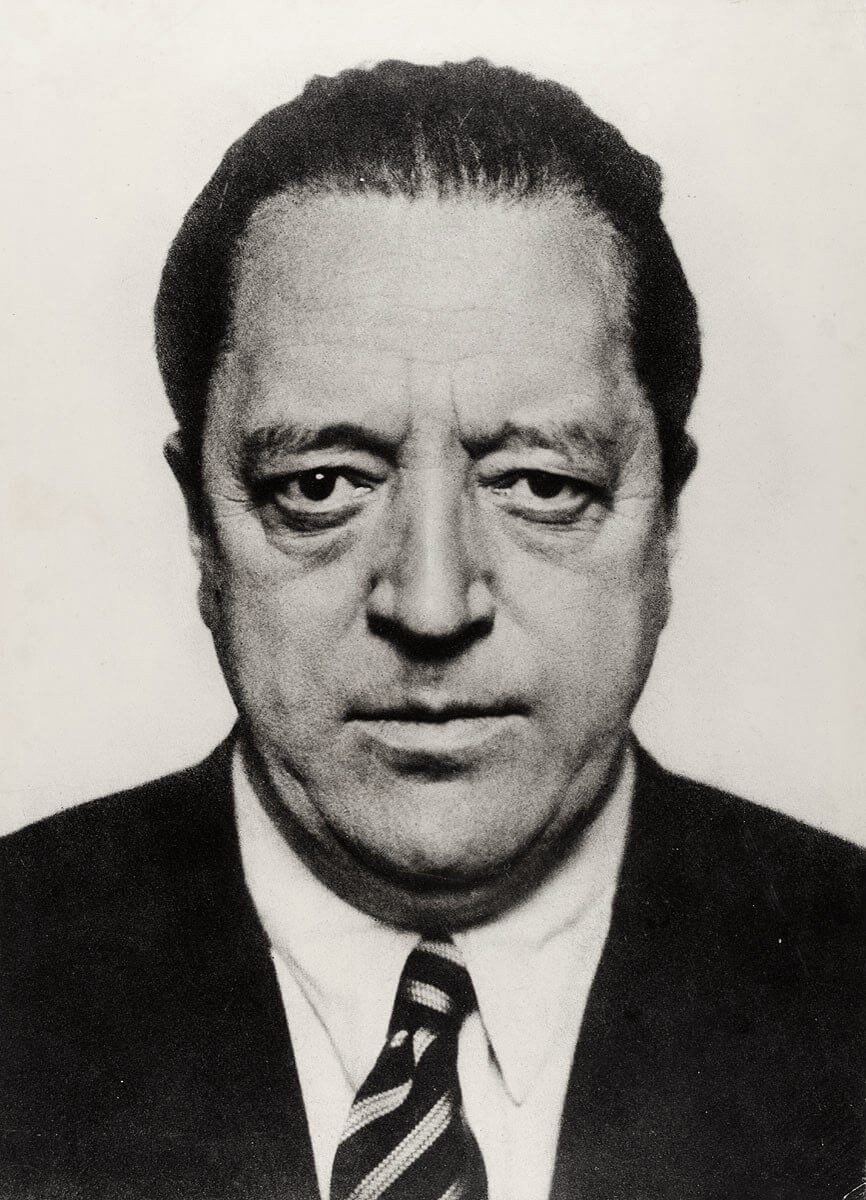 The architect Maria Ludwig Michael Mies van der Rohe on a portrait of Hugo Erfurth 1934. (Photo: Hugo Erfurth)
The architect Maria Ludwig Michael Mies van der Rohe on a portrait of Hugo Erfurth 1934. (Photo: Hugo Erfurth)
Mies goes Berlin
With the aid of Dullo, Mies took up his first Berlin employment at municipal works service in Rixdorf. Aiming more for the avant-garde circles, he soon started working for architect Bruno Paul. Under the aegis of his mentor and thanks to his support, Ludwig engages in his personal debut in 1907, designing and supervising the construction of Haus Riehl in Potsdam, close to Berlin. His professional inauguration was greeted with the benevolence of the professional world, resulting in an exemplary career start for the 21 year old. Although traces of modernism can nowhere be found in his earliest works, the keen observer might make out details, like the clear and neat design of the Riehl House – an absence of decorative poses – which might point to his tilt towards modern architecture? Yet his work was mostly influenced by his mentors advocation for the reformist architecture of this period.
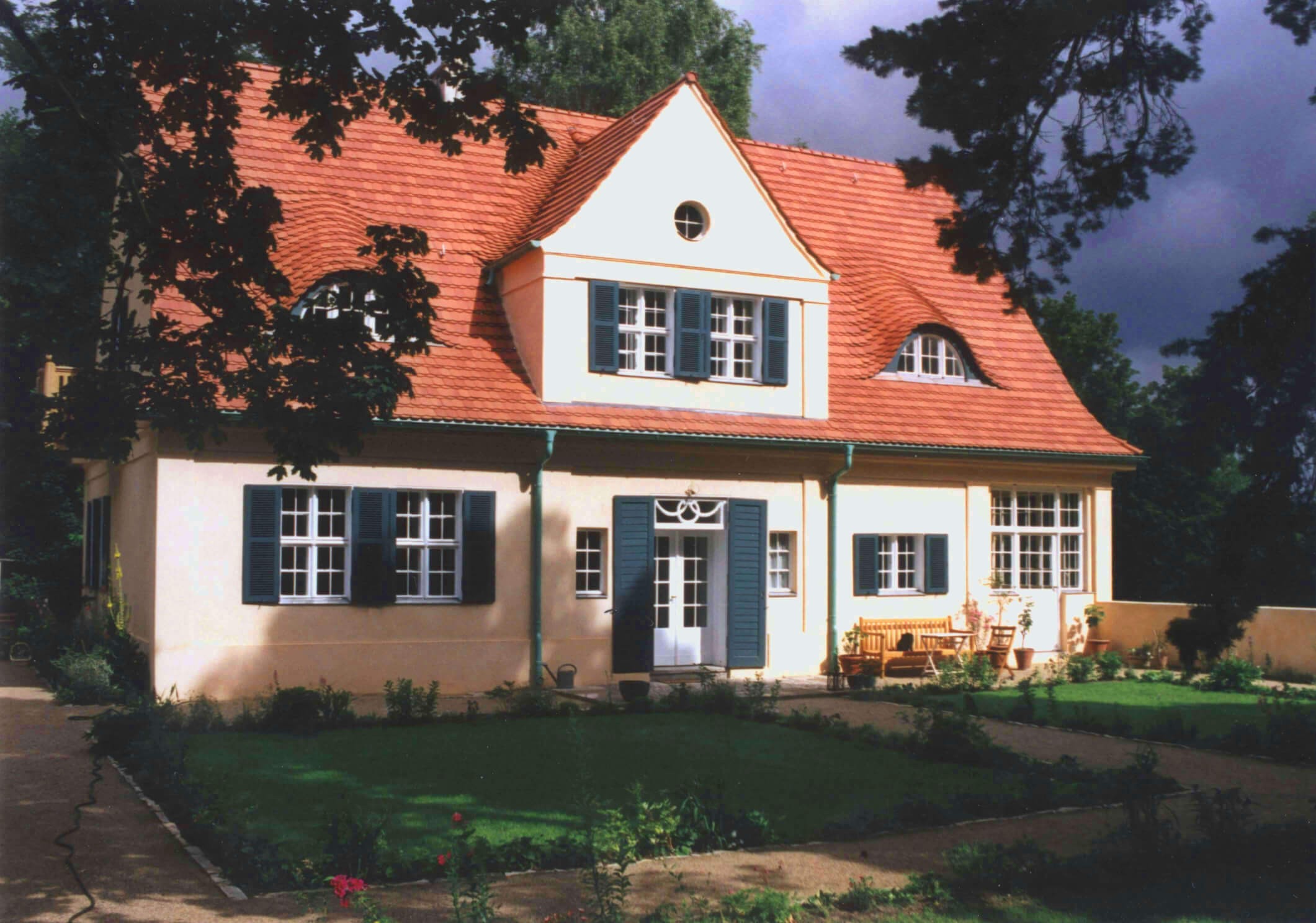 Van der Rohe's debut building had to be reconstructed in the nineteen nineties due to its catastrophic condition. Today Mies precise style can be seen again in Potsdam Babelsberg. (Photo: Folkerts Architekten)
Van der Rohe's debut building had to be reconstructed in the nineteen nineties due to its catastrophic condition. Today Mies precise style can be seen again in Potsdam Babelsberg. (Photo: Folkerts Architekten)
Mies Van der Rohes true passion for modernist architecture would not spark until his tenure at the office of Peter Behrens in 1908, whose practice must be reckoned as a cadre forge for modernist architects. In the chambers of Behrens, many future icons of modernism crossed paths. It thus appears to be a symbol of fate that Van der Rohe joins this illustrious firm in Neu Babelsberg, where he would also meet Walter Gropius. Even Le Corbusier would later have visited Behrens practice. Surrounded by likeminded fellows, studying the works of Friedrich Schinkel and alike, the most significant influence flowed from his encounters with the buildings of Frank Lloyd Wright. Poring over the work of the modernist pioneer of the early 19th century, Mies Van der Rohe left the studio of Peter Behrens to pursue his own projects abroad. His ambitions were not yet meant to be successful. He nevertheless recalled this period as a salutary and character strengthening one, seminal in terms of his perception of architecture. He returned to Berlin in 1913 founding his own studio, which seems to start off on the right foot, receiving numerous assignments from the wealthy bourgeoise. He reverts again to the stylisitcal and conceptual means of reformist architecture, transferring its features onto his design for various mansions.
Like his contemporaries Gropius and Neutra, Mies could not escape World Wars grasp. In 1915 he receives his conscription order. But unlike his coevals, he was not involved in combat situations. Being part of different construction companies, he was assigned to build and fortify military facilities – even under the shadow of war remaining true to his métier. Even though in a way, that drastically lacked modernisms charismatic promisings. In 1919 Ludwig returned to Berlin, whereas his friend Rudolf Dullo could not escape the wars destructive mayhem. During the Weimar Republic Van der Rohe concentrated on designing private residencies. Only with his appointment to be director of the Werkbund exhibition, in the course of which the famous Weißenhof settlement was created in 1927, he is once again united with the trailblazers of modernism: Gropius, Corbusier, Taut and Behrens.
Two years later, he performed his grand coup. Designing the German pavilion for the international exhibition in Barcelona in 1929, he creates one of the most significant models for modern architecture. The “Barcelona Pavillon” appeared to be formally reduced and humble. Yet, the building was eccentric in his details. Sharp geometry, free-standing walls and room-high glass panes determined its appearance. Its materiality insinuates the confidence of Mies’ creation in being an exceptional monument for modernism. Red marbled onyx, green serpentine rock, travertine, chrome and frosted glass comprise the colour and material tableau, from which one of modernisms most distinguished designs was composed.
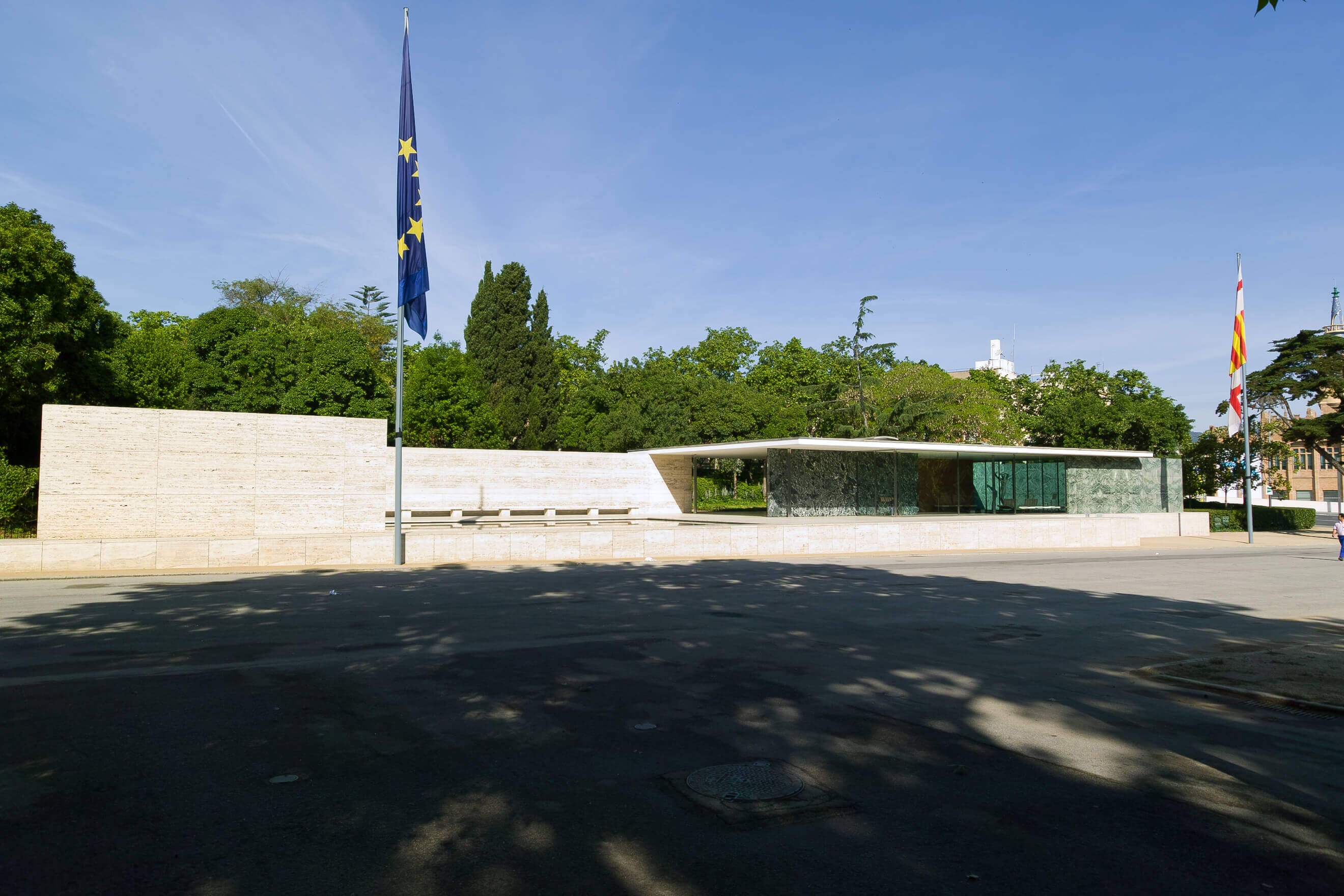 Van der Rohe's concept for the Barcelona Pavilion consisted of the arrangement of three atriums, one of which was covered as well as spatially segmented and thus formed the actual pavilion. (Photo: Thierry Tutin)
Van der Rohe's concept for the Barcelona Pavilion consisted of the arrangement of three atriums, one of which was covered as well as spatially segmented and thus formed the actual pavilion. (Photo: Thierry Tutin)
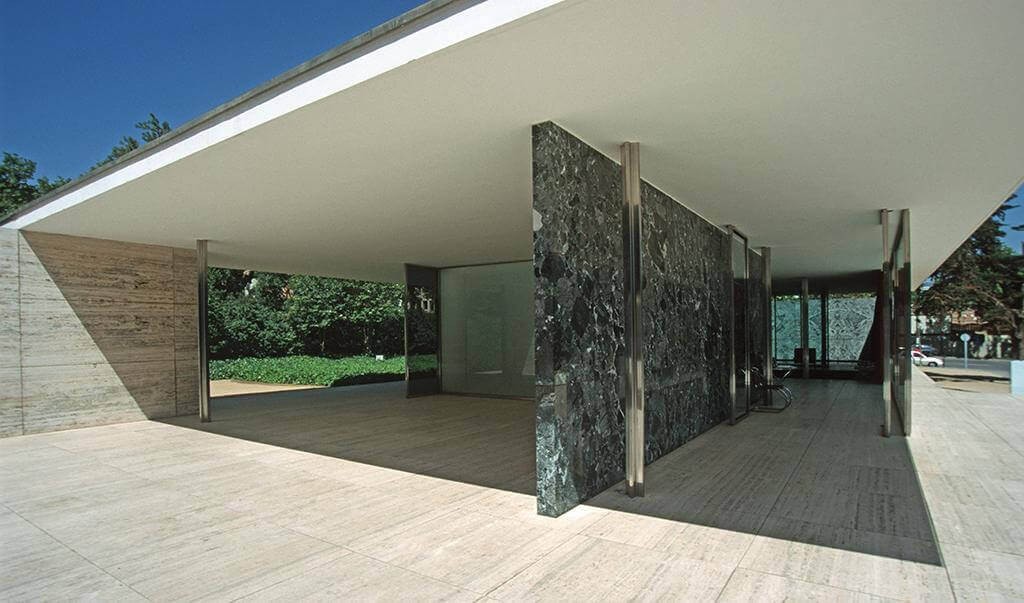 Except for the two outer circumferential walls, there are no wall structures closing the pavilion - only glass surfaces and open passages.
Except for the two outer circumferential walls, there are no wall structures closing the pavilion - only glass surfaces and open passages.(Photo: Hans Peter Schaefer)
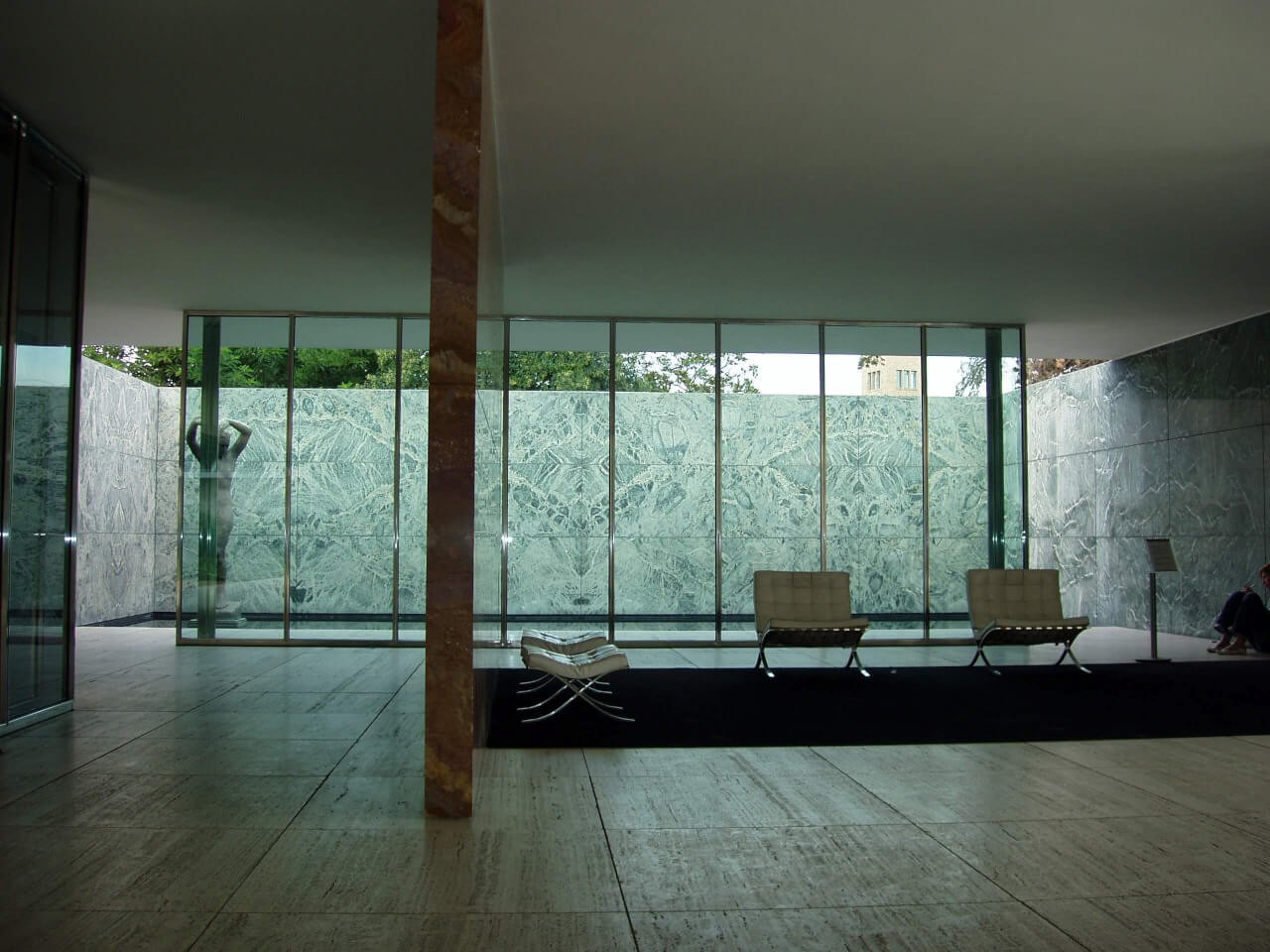 The atrium solution provides the interior of the pavilion with daylight thanks to generous window areas, without exposing the interior to the public. (Photo: Vicens)
The atrium solution provides the interior of the pavilion with daylight thanks to generous window areas, without exposing the interior to the public. (Photo: Vicens)
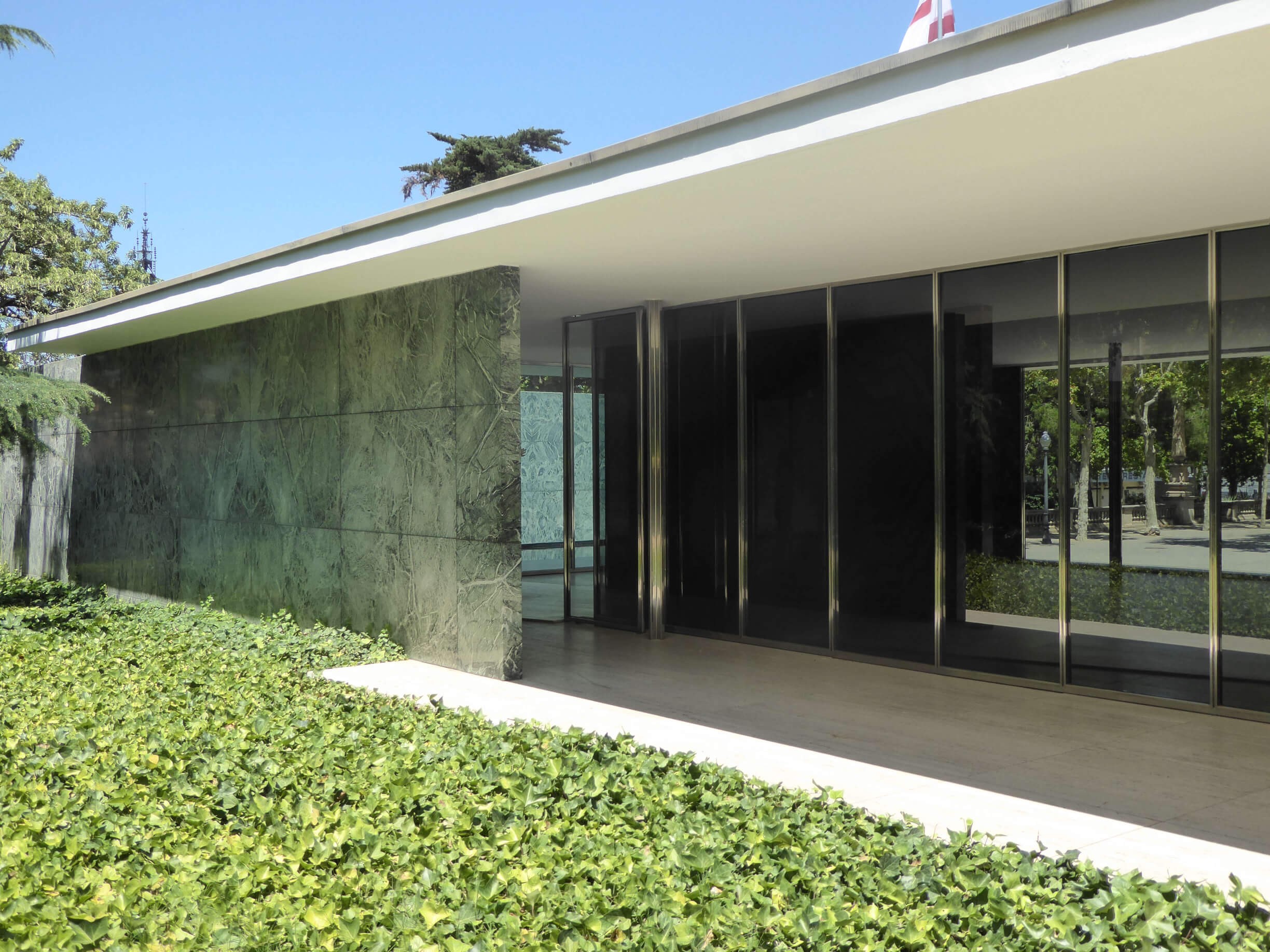 Inside and outside, the pavilions design by Mies van der Rohe engages in a flowing interplay of concealment and opening.
Inside and outside, the pavilions design by Mies van der Rohe engages in a flowing interplay of concealment and opening.(Photo: Ardfern)
Bauhaus Calling
The following year, Ludwig Mies van der Rohe was appointed director of the Bauhaus. The directorship of the school enriched his reputation and concealed what hardly seemed to be known: Van der Rohe had never studied architecture. He acquired the majority of his abilities through his employments, primarily under Peter Behrens. Obviously, this circumstance never affected Mies’ creative momentum, let alone stopped it. However, he did not rise to the figurehead of modernism in the institutional context of the Bauhaus. Here, Van der Rohe had intellectual and design resources at his disposal among colleagues and students. But the fatal mixture of economic crisis and National Socialism poisoned the social climate and numbed what the Bauhaus could have become.
In 1931, the Eduard Borchhardt department store in Dessau, which Mies commissioned his student Eduard Ludwig to design, still showed his unbroken will to develop a modernised building culture. The design of the department store was astonishingly close to those iconic designs of Van der Rohe, which were only to become reality on the other side of the Atlantic. However, the vision of a penetrating modernist building with a flat, glass façade, accentuated by the bands of the ceiling edges, stood in stark contrast to the conservative neighbouring buildings. This contrast, in which traditionalism and modernism would have stood face to face, turned their design to the publics resistance. In the end, the contract was awarded to the Dessau architect Elster, who filled the gap between the buildings on Kavaliersstraße with a design that did not overtax the minds of the time. Undeterred, Mies continued to design ahead of his time.
But now the Bauhaus claimed Mies' full attention. The school in Dessau had to give way to the pressure of National Socialist interests. In a final effort, Mies moved it to a former production facility for telephone sets in the west of Berlin. The school was to survive on fees for the use of different Bauhaus designs. After harassment by the Nazis and without any political support, the Bauhaus disbanded in 1933. For another four years, Mies tried to adapt to the inhospitality of National Socialism. He became a member of the Reich’s Chamber of Culture, joined calls for government support and produced designs for the Brussels World Exhibition in 1935. But these were rejected by the Reich’s leadership as unacceptable, suspecting him of having socialist sympathies. His memorial design for Rosa Luxemburg and Karl Liebknecht made him an ideological opponent of the NSDAP. He was forced out of his offices and work as an architect became impossible. He decided to emigrate to the USA.
Fusing with American Modernism
Unwittingly, he had already prepared his emigration in 1932: At that time, the exhibition "Modern Architecture: International Exhibition" of the New York MoMa sparked a broad interest in modern architecture. The unmistakable charisma of his buildings attracted the attention of experts and the public alike. In 1936 he received various offers for teaching posts in the USA. A year later he decided to take over the chair of architecture at the Chicago Armour Institute. He emigrated in 1938. In Illinois, the modernist milieu of the Chicago school was already awaiting him - and another Bauhausian fellow: Laszlo Moholy-Nagy had founded the School of Design at the Illinois Institute of Technology. As dean of the architecture faculties of the Armour Institute and Institute of Art, Van der Rohe dedicated himself to cultivating modernist design ideals throughout the departments. The fresh wind attracted many students to the growing campus. To cope with the onslaught, the university management entrusted Mies with its expansion.
The Crown Hall of the IIT is considered a masterpiece among his designs. In addition to its iconic appearance, its pioneering role must also apply equally to the skill with which Mies and his planners conceived the statics of the building. Instead of conventional girders, a system for suspending the roof from external supports was to handle the load bearing. In this way, an unobstructed, variable area for the students, their workshops and the library could be created. In addition, the body of the building could now be fitted with vast glass panes all around. The result was a minimalist building whose two-storey glass-frosted glass façade is graphically divided by the fine lines of the black steel frame grid. It is closed at the top by its four iconic suspensions. Crown Hall strikingly articulated the essential aspects of his design philosophy of simplicity, clarity and a functionalism. The further realisation of his master plan for the campus was to be continued beyond his death.
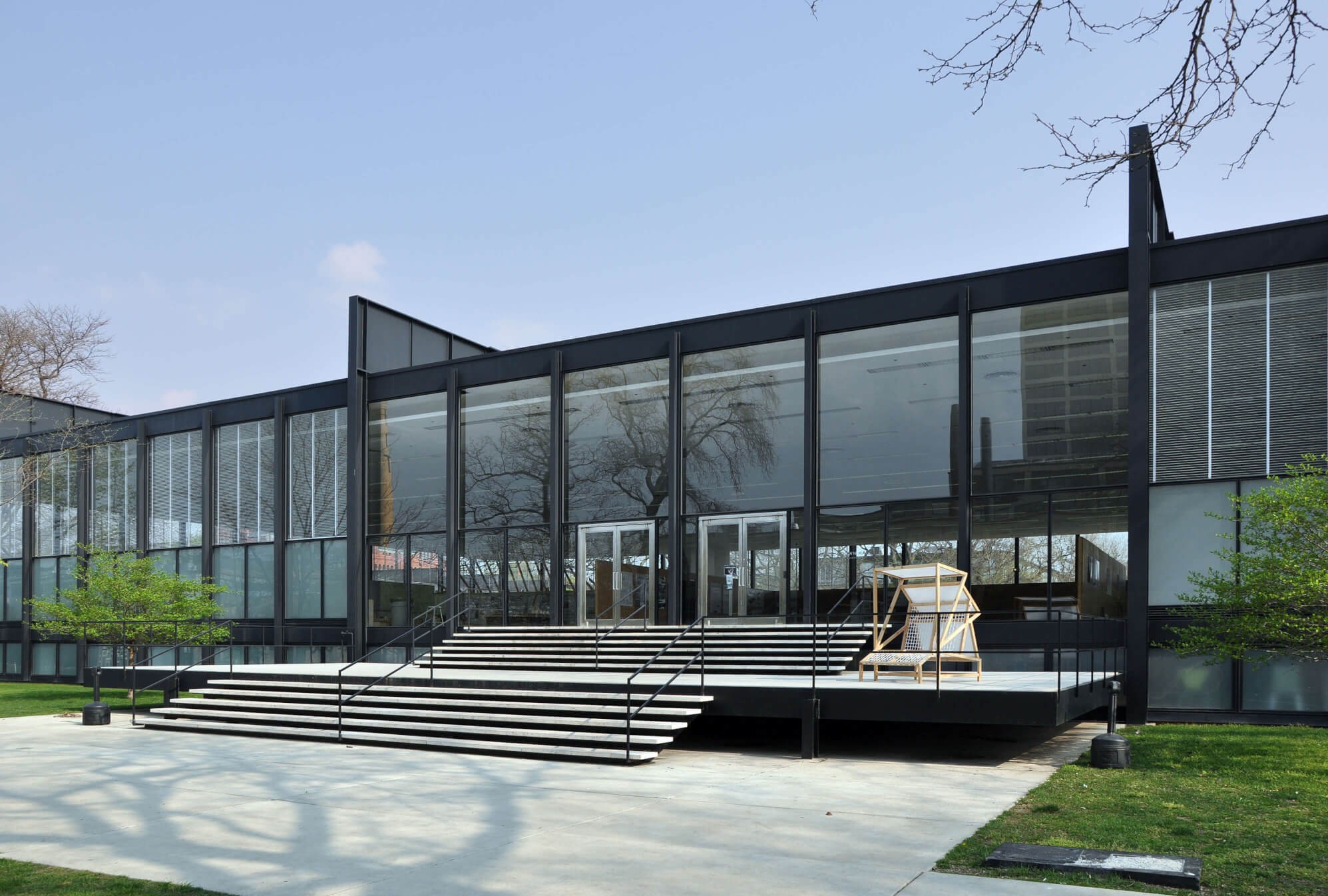 The idea to create a multi functional space without its users being hindered by various construction elements or tempted into certain patterns of behaviour, drove Van der Rohe to the revolutionary design of the Crown Hall. (Photo: Joe Ravi)
The idea to create a multi functional space without its users being hindered by various construction elements or tempted into certain patterns of behaviour, drove Van der Rohe to the revolutionary design of the Crown Hall. (Photo: Joe Ravi)
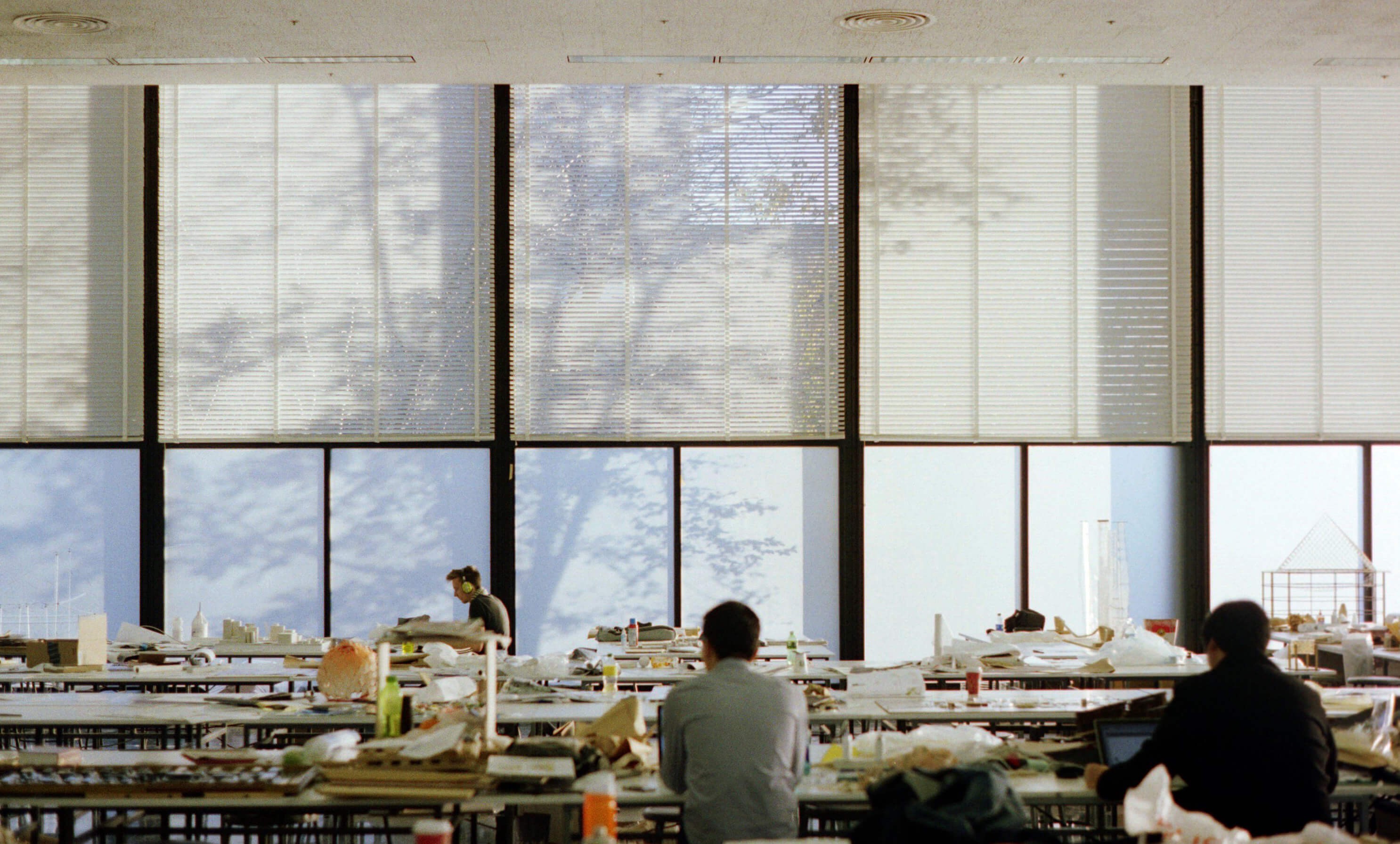 According to its creator, the space that Mies designed should last hundreds of years without becoming obsolete. Only the open, light-flooded concept was able to achieve this, while at the same time preserving universal usage possibilities inside. (Photo: Timothy Brown)
According to its creator, the space that Mies designed should last hundreds of years without becoming obsolete. Only the open, light-flooded concept was able to achieve this, while at the same time preserving universal usage possibilities inside. (Photo: Timothy Brown)
His respected position, as well as his reputation as a prophet of modernism, helped him make a brilliant debut in the US architectural landscape. In 1939 he founded his own office in Chicago, whose success was not long in coming. His uncompromising modernism inspired real estate developer Herbert Greenwald and Chicago entrepreneur and city councilman Robert Hall McCormick III to plan various apartment buildings in Chicago. The joint project started in 1947 with the Promontory Apartments. Van der Rohe's apartment towers on Lake Michigan are better known: In 1951 the 860 - 880 Lake Shore Drive Apartments were completed in his typical steel and glass style.
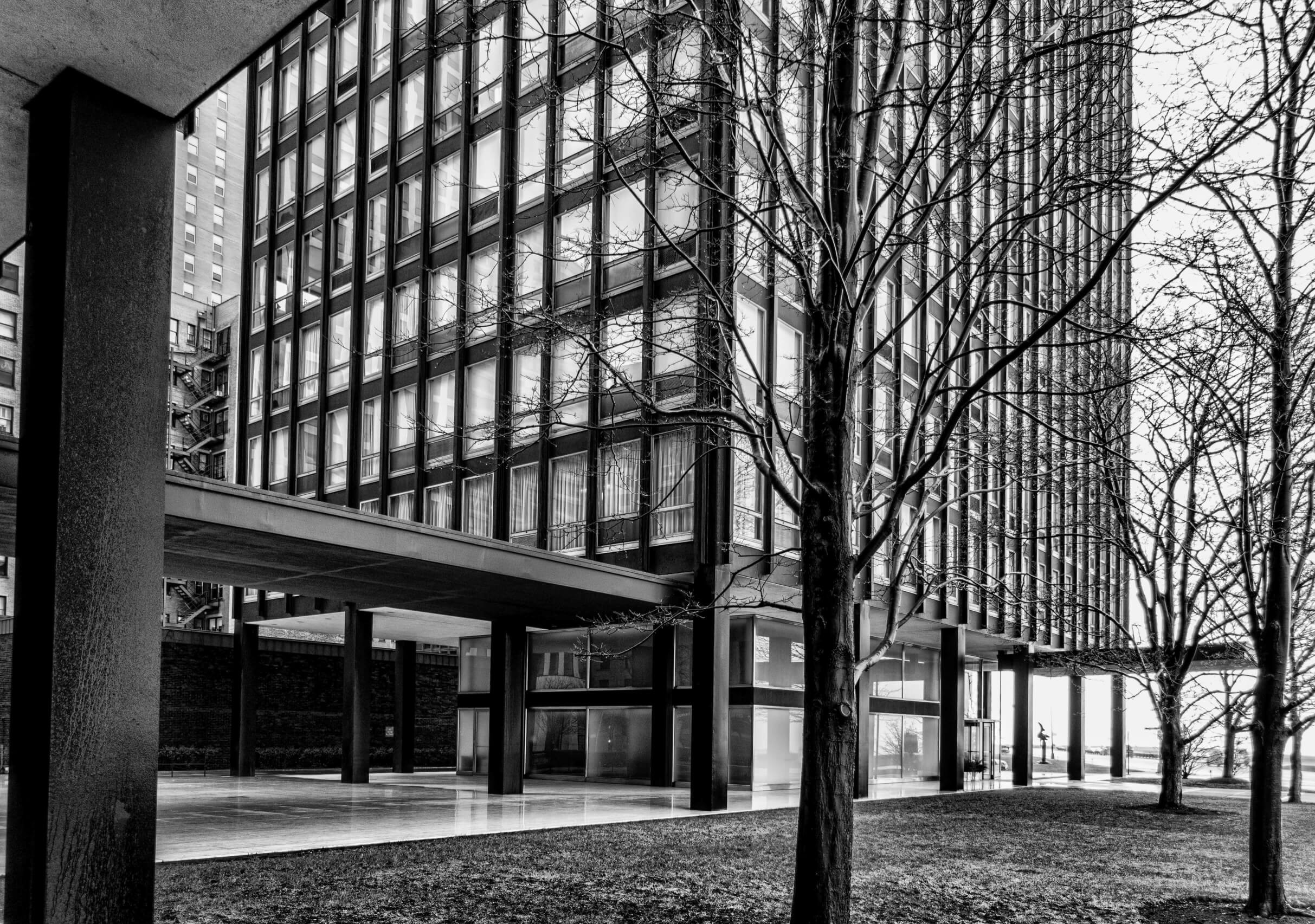 The entrance area of the Lake Shore Drive Apartments, above which rises the black grid of the steel façade that was characteristic to his high-rise buildings in the years to come. (Photo: Marc Rochkind)
The entrance area of the Lake Shore Drive Apartments, above which rises the black grid of the steel façade that was characteristic to his high-rise buildings in the years to come. (Photo: Marc Rochkind)
His work constantly expanded the sphere of influence of modern design. What was previously negotiated and fragmentarily tested under university laboratory conditions and topic only to academic discourse, he translated into the reality of American cities. The nations mega cities required a different way of thinking regarding their architectural dimensions. The degree of urban densification had long exceeded that of Paris, London and Berlin and demanded reconsidered design standards. A circumstance that only benefited Van der Rohe's approaches: his early skyscraper designs, such as that of an office building in Berlin in 1919, were too radically modern for Europe at that time. The triangular building with its sharp-edged, monumental glass façades, which would have more than doubled the height of the residential buildings on Friedrichstrasse, must be considered futuristic even from today's perspective. Back then, it must have appeared to people as a disturbing construct of obscure strangeness. No such cultural obstacles were found in America. After all, the nation had been founded on the idea of renewal.
The Lake Shore creations were followed by other high-rise buildings in the 1950s: the Esplanade Apartments, the Commonwealth Promenade Apartments, 2400 Lakeview Apartments and others. During the same period, two of Van der Rohe's most popular creations were also built: the Fox River House, better known as Farnsworth House, and the Seagram Building from 1958. In both buildings, two characteristics of Mie's work manifest themselves. On the one hand, the sharpening of the modern building character of Farnsworth House:
 With the Farnsworth House in Plano, Illinois, Mies created only a slight intervention in the natural context of the building. It hovers above the ground on steel girders, thus increasing the novel lightness of the modern architecture without getting bogged down in the landscape. (Photo: Victor Grigas)
With the Farnsworth House in Plano, Illinois, Mies created only a slight intervention in the natural context of the building. It hovers above the ground on steel girders, thus increasing the novel lightness of the modern architecture without getting bogged down in the landscape. (Photo: Victor Grigas)
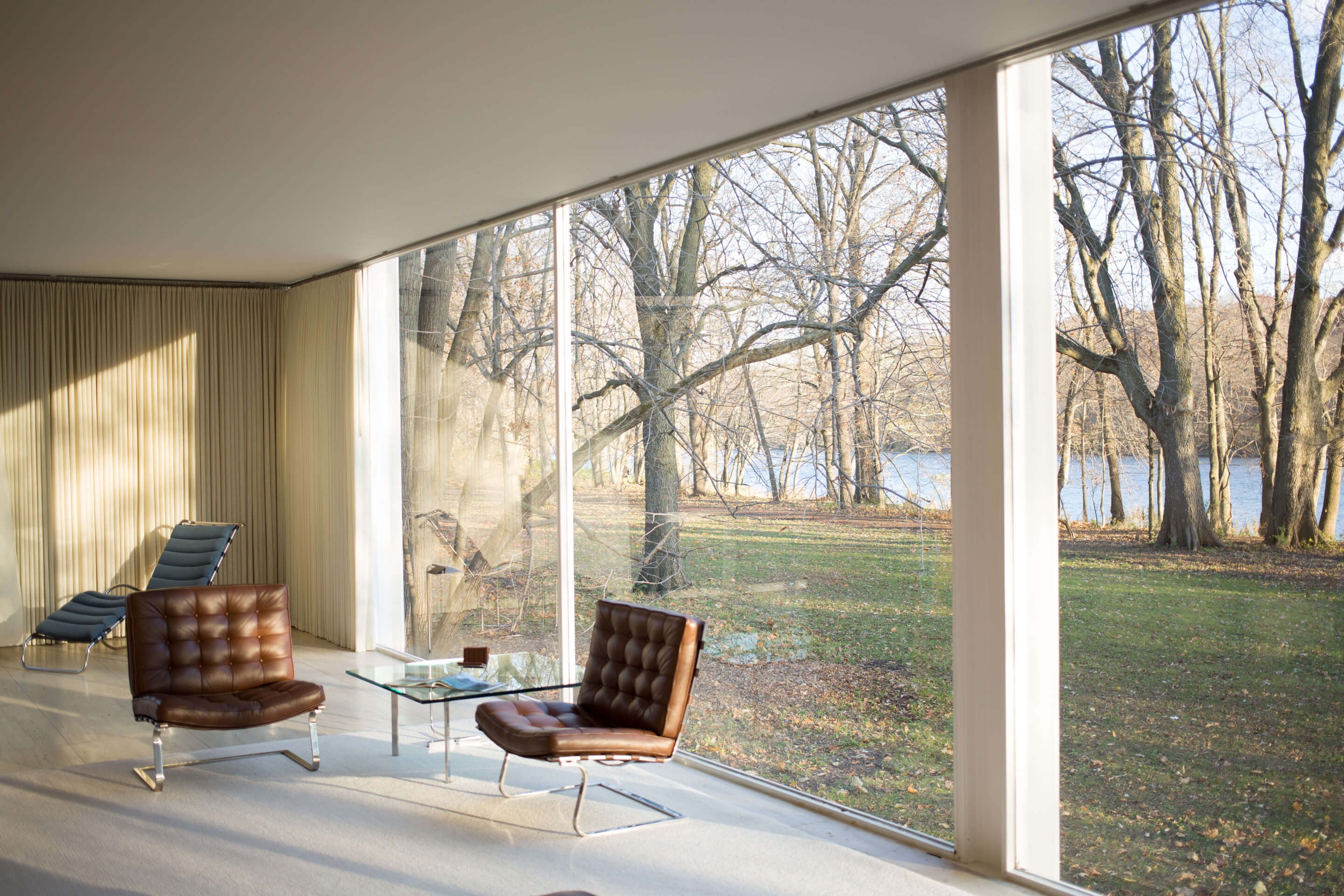 The near-natural refuge, which Van der Rohe built in 1951 for his friend Edith Farnsworth, was his first private building after 15 years of design work for real estate projects, public and institutional buildings. (Photo: Victor Grigas)
The near-natural refuge, which Van der Rohe built in 1951 for his friend Edith Farnsworth, was his first private building after 15 years of design work for real estate projects, public and institutional buildings. (Photo: Victor Grigas)
Its striking feature is its implied state of suspension and a visual and spatial openness that seems to dissolve the materiality of the building. The 38-story administrative building of the Canadian whiskey company Seagram, on the other hand, reflects Van der Rohe's lifelong project to liberate modernism and its isolated manifestation in form of different “houses”. What he had explored in the context of the campus expansion of the Illinois Institute of Technology, he up-scaled in his highly industrialised style to create the skyscrapers that still dominate the ideas of modern cityscapes today. The Seagram Building in particular contains elements from Mies earlier designs that are clearly reminiscent of the Crown Hall on the IIT campus. Throughout his life, he realized numerous buildings with modernist souls in the US and Europe and created institutes, research buildings, administration buildings, government buildings, company headquarters, schools, universities and residential buildings.
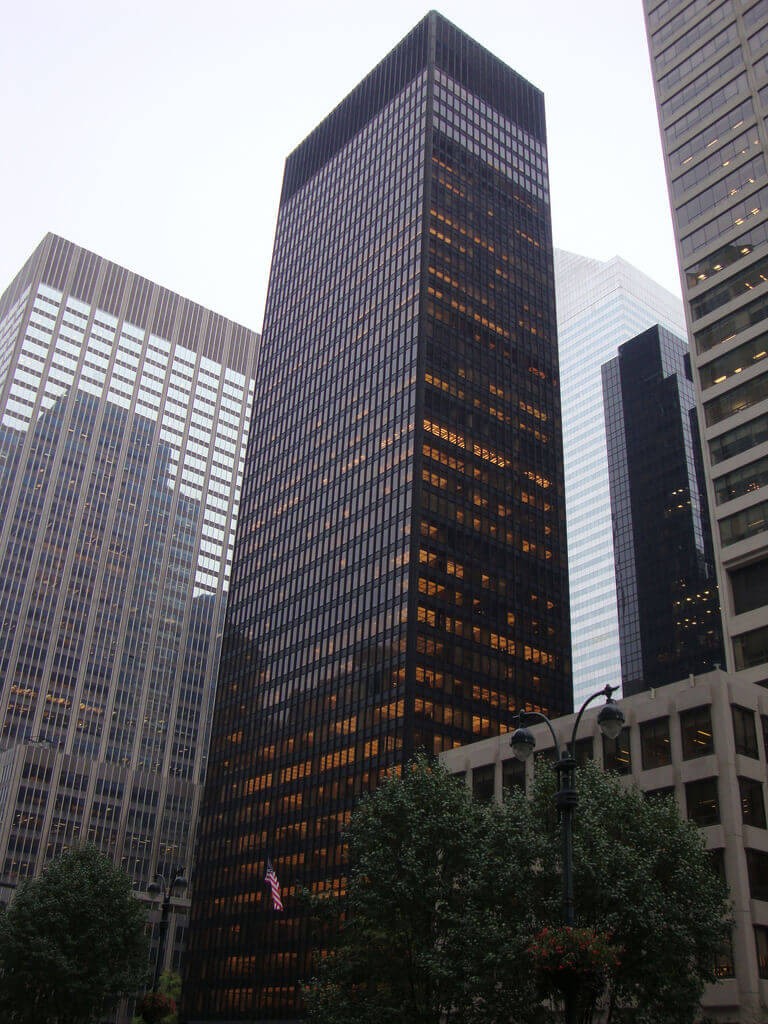 The Seagram Building represents a new magnitude in Mies' work. At times he had to hand over its realization to his colleague and friend Philip Johnson, since he, who had never graduated architecture school, could not be officially entrusted with its construction.
The Seagram Building represents a new magnitude in Mies' work. At times he had to hand over its realization to his colleague and friend Philip Johnson, since he, who had never graduated architecture school, could not be officially entrusted with its construction.(Photo: Tom Ravenscroft)
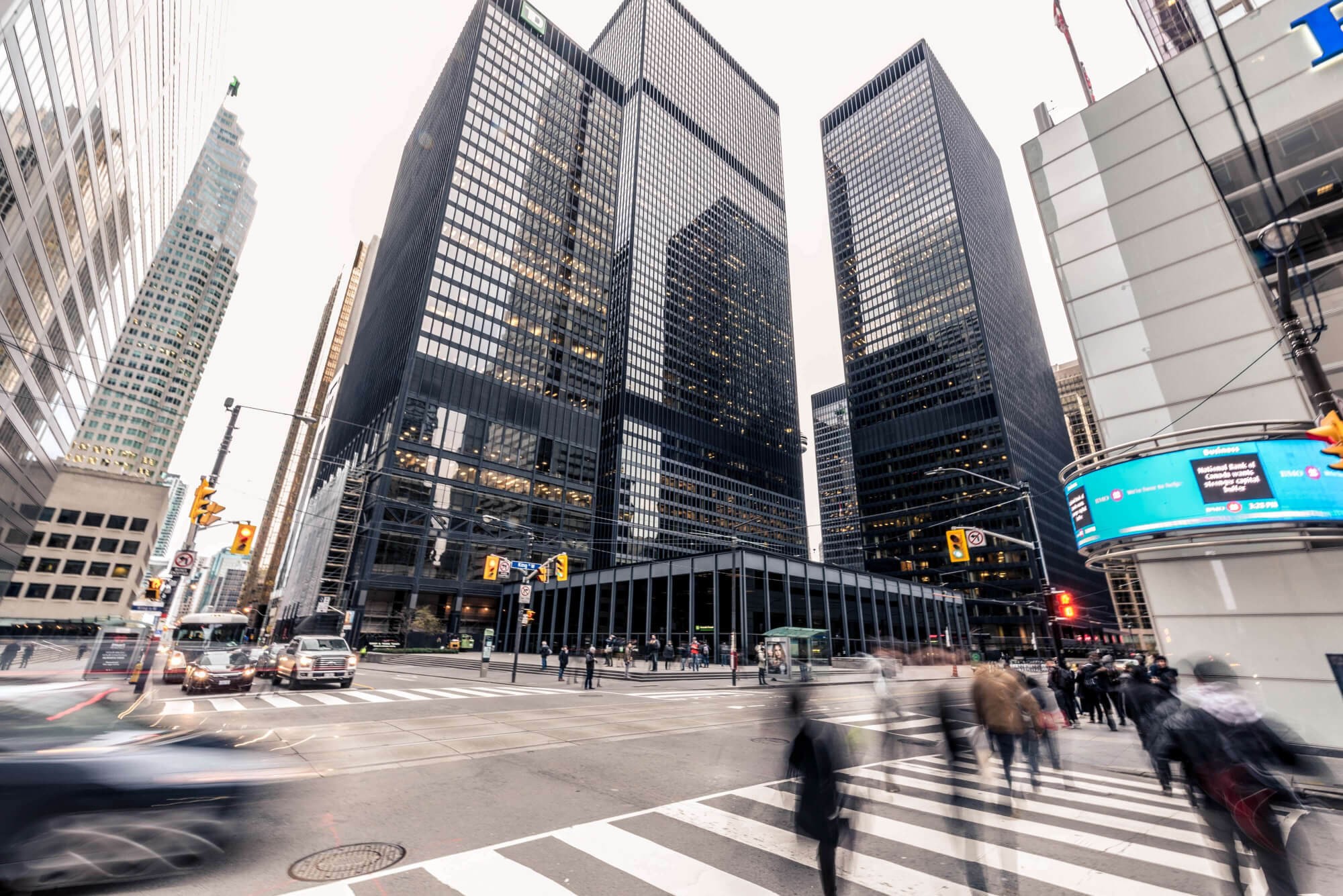 The Dominion Centre in Toronto also enriched his new, towering architectural œuvre. (Photo: Alexandru Gogan)
The Dominion Centre in Toronto also enriched his new, towering architectural œuvre. (Photo: Alexandru Gogan)
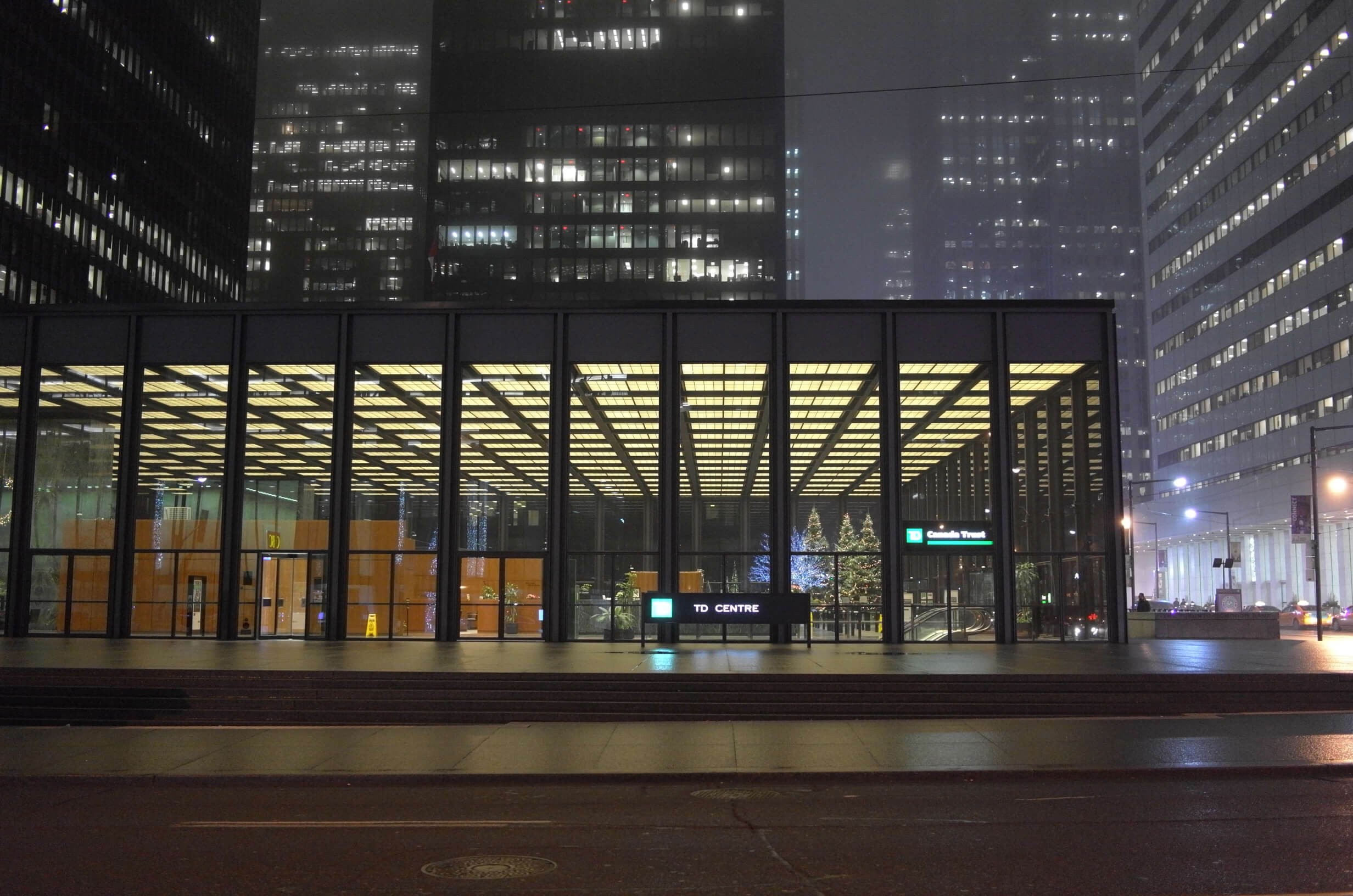 The recurring stylistic elements of Mies's buildings became his trademark: blackish, slender steel constructions clad in monumental glass surfaces make his brush stroke unmistakable. (Photo: Jason Paris)
The recurring stylistic elements of Mies's buildings became his trademark: blackish, slender steel constructions clad in monumental glass surfaces make his brush stroke unmistakable. (Photo: Jason Paris)
His last project in his home country was realized in Berlin in 1968. With the New National Gallery, he built a monument of modernism, which he had already pre-considered in a publication of 1943. The only opaque element of the building was to be its steel coffered ceiling, which floated atop a glass skin. Otherwise the building showed no barrier between inside and outside and engaged in a fluid relationship with the public space. The distinctive pavilion building appears as light as a feather. The cross-shaped placement of the support elements instead of at its corners, also reduced its visual weight and makes it possible to create an universally usable interior. With this sacred modernist building, Mies concluded his work in Europe. Until his death in 1969 and beyond, his projects were only to be realized abroad.
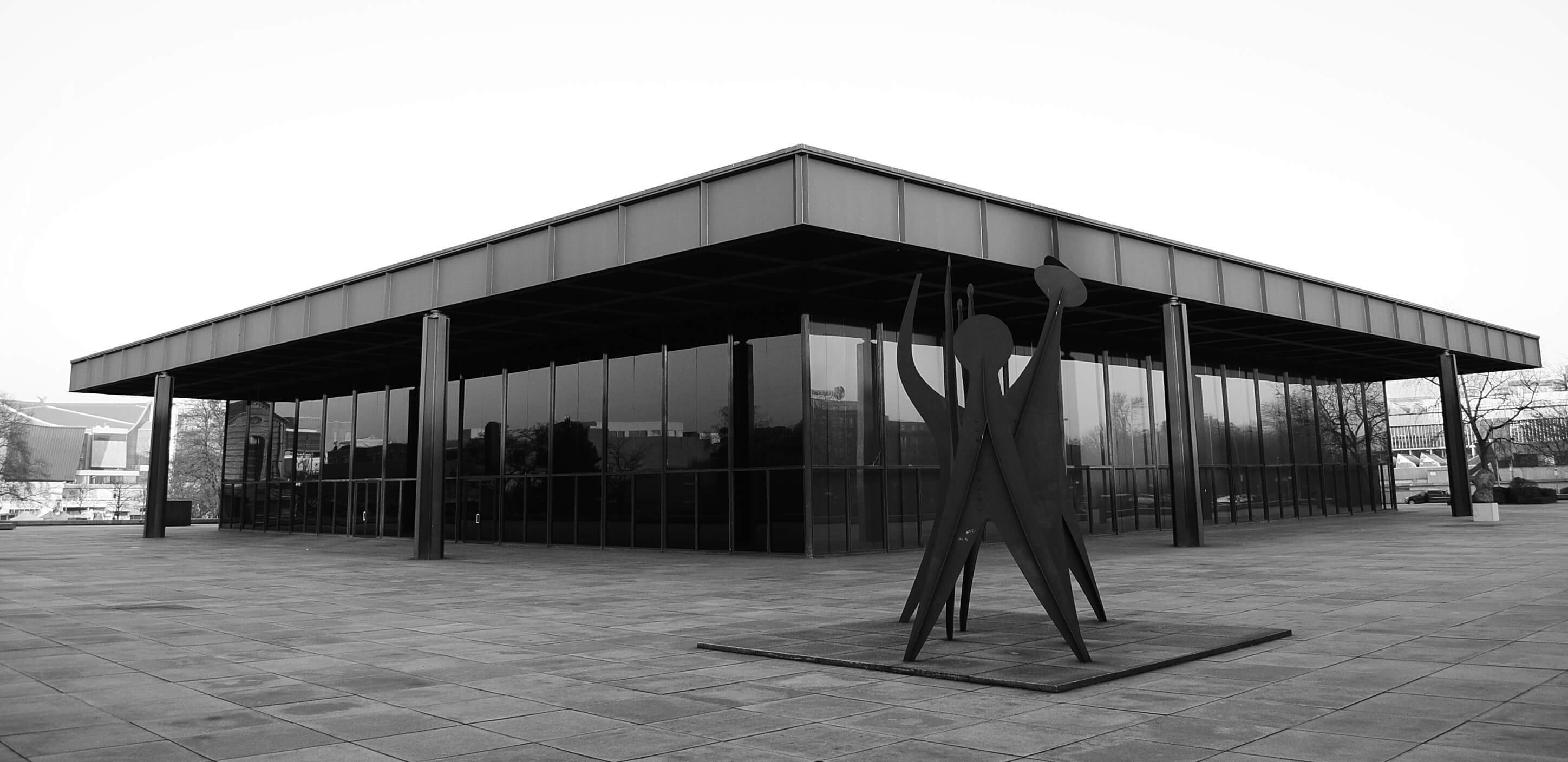 With the Neue Nationalgalerie, Mies returns to Berlin and at the same time continues to develop his universal space. Instead of directly attaching static elements to the outer structure, as in the Crownhall, his cubic glass space now reigns freely under an overhanging roof.
With the Neue Nationalgalerie, Mies returns to Berlin and at the same time continues to develop his universal space. Instead of directly attaching static elements to the outer structure, as in the Crownhall, his cubic glass space now reigns freely under an overhanging roof.(Photo: Hans Knips)
 Without beams between the window elements, the glass principle of Van der Rohe's built, openness can be brought about even more consistently. (Photo: K. Lee)
Without beams between the window elements, the glass principle of Van der Rohe's built, openness can be brought about even more consistently. (Photo: K. Lee)
Making More from Less
Ludwig Mies Van der Rohe carried the idea of modernism to undreamt-of heights and, with his skyscrapers, drew the picture of modernist architecture in an unsurpassed format. In this way he integrated his penetrating modernity and his approach to space into the urban realities of the big cities. His creations thus challenge society to a new way of thinking about architecture. Mies glazed the cities. And spread with them modernity as a symbol of a rational - functionally and aesthetically enlightened - present. His work contains a unique power of inspiration that continues to determine our aesthetic consciousness. From the perception of space to the use of media and smart devices: Glass surfaces are omnipresent and gain new functions every day.
Through the continuous interweaving of architecture and technology, new life scenarios and challenges, it is essential to push the innovative idea of the window further. An internally increasingly complex structure, whose exterior seems to be constantly receding. With this "Less", in the "Less is More" that Mies so often conjured up, Sky-Frame, too, repeatedly creates a clear "More" in its collections. With a modern mindset and unique know-how, a vision of the window is thus created, allowing new architectural thinking and making its realisation possible. In Mies work, the window prevails as the crowning glory of modernity. Together with Walter Gropius and Joseph Neutra, he worked with the window as an instrument for proclaiming an ideal, for creating new concepts of space and turned it into the symbol of a new epoch. Their jointly founded ethos of architectural freedom combines with the values of Sky-Frame. Here the idea thrives even further and completes what the icons of modernism have prepared and finds its logical conclusion in "A View, not A Window".

